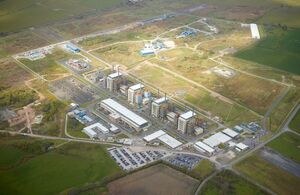Natural Capital Board visit to innovative pilot project site
- sarahbruce4
- Aug 26, 2025
- 2 min read
The Borderlands Natural Capital Programme Board have been on the road, with a Board meeting in Peebles, followed by a visit to one of the sites for the species-rich grassland project. The day was hosted by Scottish Borders Council and Butterfly Conservation, who are delivering the pilot project for the Borderlands’ Natural Capital Scotland programme.
The Board meeting in the morning saw a demonstration of NatureScot’s natural capital tool. This led to lots of discussion around how the tool could be used across the Borderlands’ work, as well as across other projects that Board members were involved in.
This was followed by a presentation showcasing North East Combined Authority’s new North East Carbon and Nature Marketplace. This pioneering marketplace connects private buyers with sellers of high integrity natural capital projects marketplace.netzeronortheastengland.co.uk/hub. Another good debate followed and lots of connections were made across organisations, which are now being followed up.

The Board then drove a short distance out of Peebles to Neidpath Farms, where Apithanny Bourne, from Butterfly Conservation and the farm manager, Matt Griffin, showed members around the farm and talked through all the regenerative farming approaches they are using.
They saw first hand the early stages of how landowners are trialling hillside management techniques to control bracken and gorse, promote upland flora like rock rose (vital for the butterfly’s lifecycle), and enhance grazing quality. This and other work will in the project will enhance the natural capital and economic value of a number of farms across the Scottish Borders region while providing new habitats for this endangered butterfly species.

This is just one project from the Borderlands Inclusive Growth Deal’s £10 million Natural Capital programme. The pilot projects are aimed at supporting a new, innovative way of working with the environment to deliver economic development and enhance land use planning and management.
Natural Capital work is growing globally, from small scale conservation to multi-million-pound investment funds and is increasingly important in understanding and valuing the relationship between the environment and the economy.
Natural Capital forms a part of our natural wealth, alongside traditional assets such as infrastructure, skills and technology. It can be defined as the environmental resources (e.g. plants, animals, air, water, soils) that combine to yield a flow of benefits to people.
These benefits can be ‘use values’, such as timber, freshwater or outdoor recreation; or ‘non-use values’, such as the value people place on the existence of particular habitats or species.
Seeing our natural resources in this way helps us to account for its contribution to the economy, as well as placing a value on the range of benefits and opportunities that investment in those assets can bring.




Comments